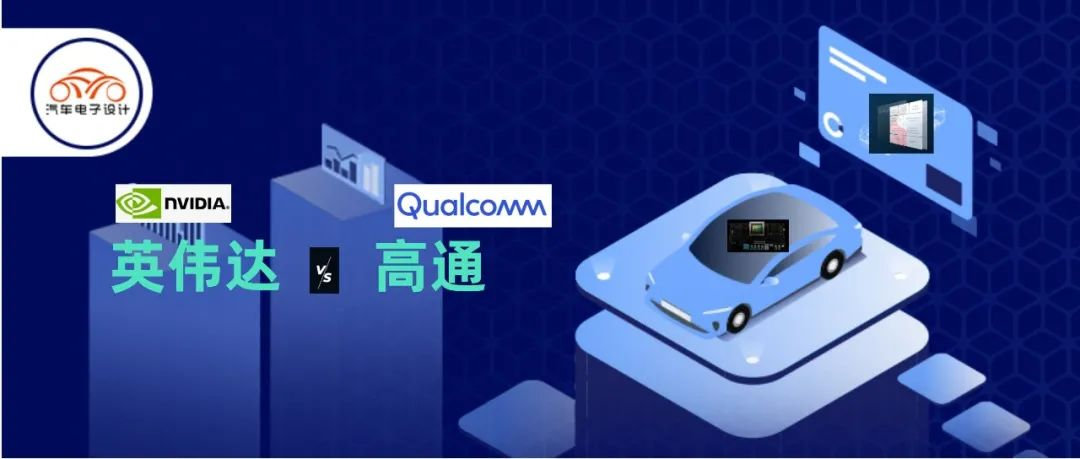Author: Zhu Yulong
In contrast to the dominating Chinese companies in the battery industry, American companies currently lead the development of the entire industry in automotive chips and high-performance computing chips. This week, Qualcomm and NVIDIA respectively released their strategies for their next generation of high-performance computing chip SOCs.
- Qualcomm
Qualcomm has launched “Integrated Automotive Supercomputing SOC” – Snapdragon Ride Flex, including the Mid, High, and Premium levels. The highest level Ride Flex Premium SoC, when combined with an AI accelerator, can achieve a total AI computing power of 2000TOPS.
- NVIDIA
NVIDIA has released the centralized computing SOC DRIVE Thor, which has twice the computing power of Atlan, reaching 2000TOPS, and is scheduled to be put into production in 2025, directly surpassing the DRIVE Atlan chip with 1000TOPS.
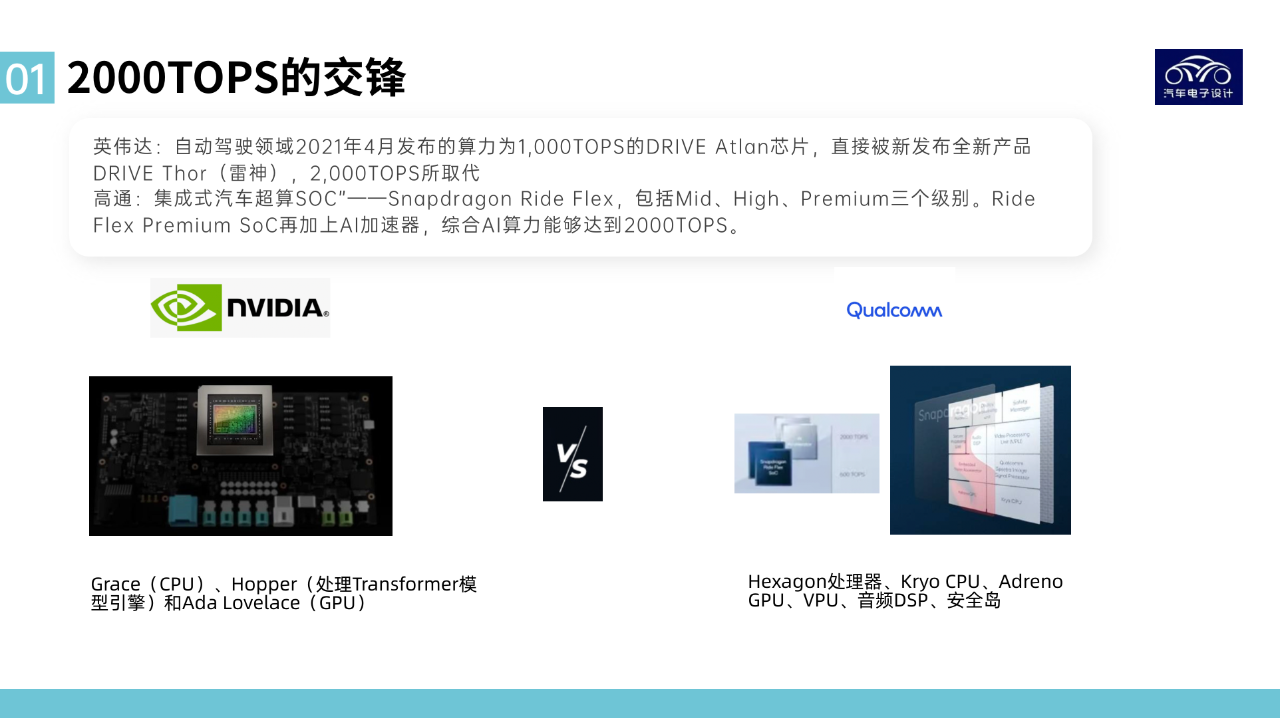
Different paths taken by the two companies
- NVIDIA’s strategy is more direct: Since all automotive companies are focusing on centralized architectures and electrical and electronic architectures are centralized, the core of smart cars is the computing platform (chip) that controls all core functions of cars. NVIDIA provides the top-level chip for this purpose, and only one or two of them are required. DRIVE Thor can integrate the computing requirements of AI functions needed on smart cars (mainly focusing on image processing), including advanced autonomous driving, on-board operating systems, smart cabins (instrument panels and entertainment systems), and autonomous parking, etc. With 2000TOPS of computing power resources, the entire automotive industry can build its own software model, allocate various different tasks arbitrarily, while NVIDIA provides relevant development tools. By using one chip to solve all software needs, DRIVE Thor can play this role.
This strategy is a deliberate and considered progress – since you have used my SOC chip to build autonomous driving, my evolving chips are looking to integrate even more functions, which directly replaces other SOC chip companies.
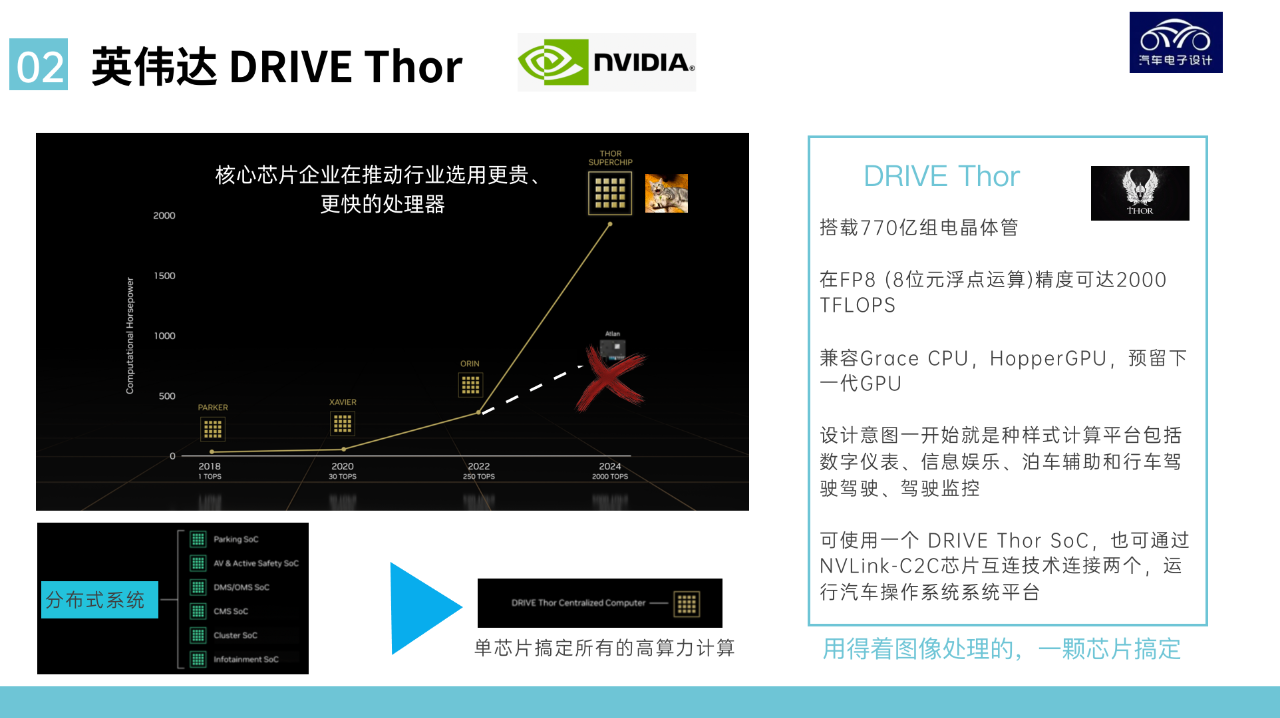 The approach of Qualcomm is not the same as that of NVIDIA, which only makes one chip. Qualcomm realizes different methods through Snapdragon Ride Flex. The Flex SoC integrates Hexagon processor, Kryo CPU, Adreno GPU, VPU, audio DSP, security island, and other functions. Its core logic covers computer vision systems, digital cockpits, ADAS/AD, and interconnected aspects. Snapdragon Ride Flex includes three levels: Mid, High, and Premium. The highest level of Ride Flex Premium SoC, together with an external AI accelerator, can achieve a comprehensive AI computing power of 2000TOPS.
The approach of Qualcomm is not the same as that of NVIDIA, which only makes one chip. Qualcomm realizes different methods through Snapdragon Ride Flex. The Flex SoC integrates Hexagon processor, Kryo CPU, Adreno GPU, VPU, audio DSP, security island, and other functions. Its core logic covers computer vision systems, digital cockpits, ADAS/AD, and interconnected aspects. Snapdragon Ride Flex includes three levels: Mid, High, and Premium. The highest level of Ride Flex Premium SoC, together with an external AI accelerator, can achieve a comprehensive AI computing power of 2000TOPS.
Qualcomm’s approach allows customers to choose, either selecting a part or packaging it to do the job.
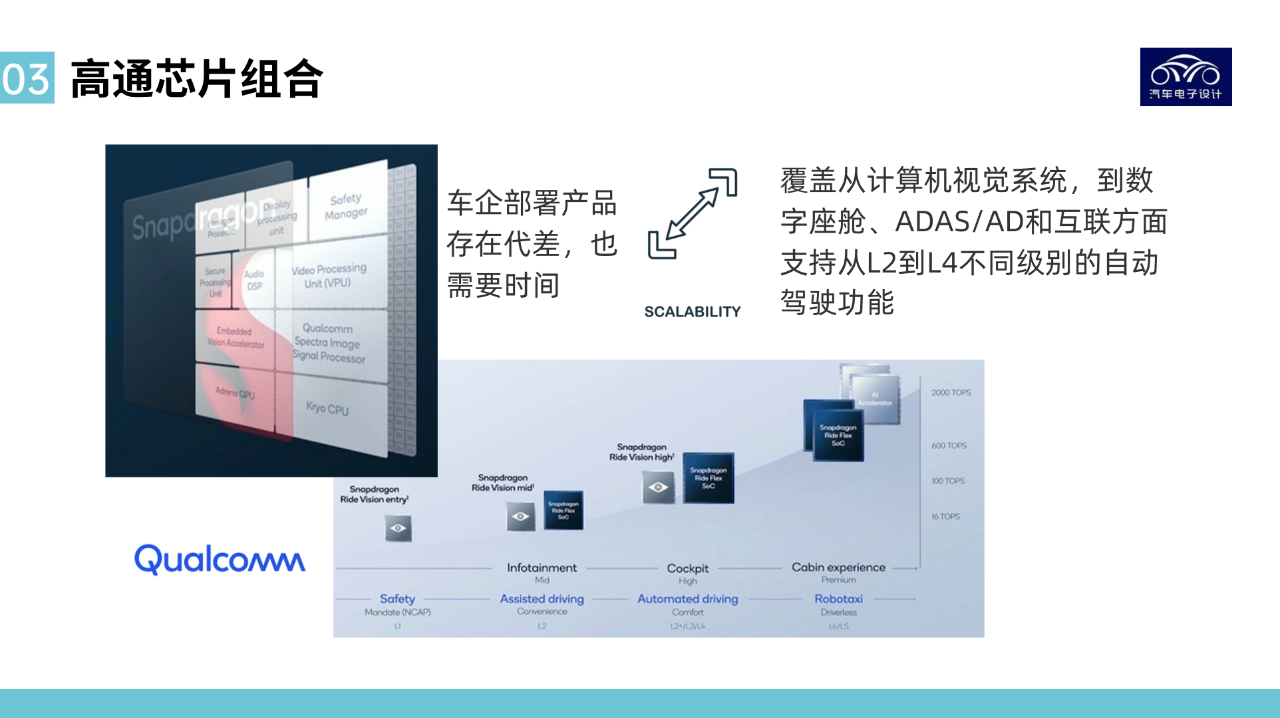
Approach of High Computing Power Chip
By comparing the approaches of the two companies, we can see two differences:
-
Single-chip enclosure: NVIDIA’s operation is simple and intuitive, canceling the step-by-step evolution approach (Atlan), and providing a product with ultra-high computing power derived from Orin. If you continue to use Thor for autonomous driving, the rich computing power is definitely more cost-effective than matching it with Qualcomm chips. If you can’t afford the price of Thor, continue to use Orin.
-
Different chip combinations: Qualcomm’s approach meets the demands of major customers such as GM, BMW, Volkswagen, and other automakers by combining various chips to develop scalable systems. If it signs a strategic agreement with a vehicle customer, Qualcomm can provide excellent service, which seems to be an impeccable approach.
However, the problem is that this means a significant investment of resources. Once the service model direction of the chip company is off, there is no way to keep up with different demands. Qualcomm is still in the growth stage in the automotive industry, and the entire personnel is restricted.
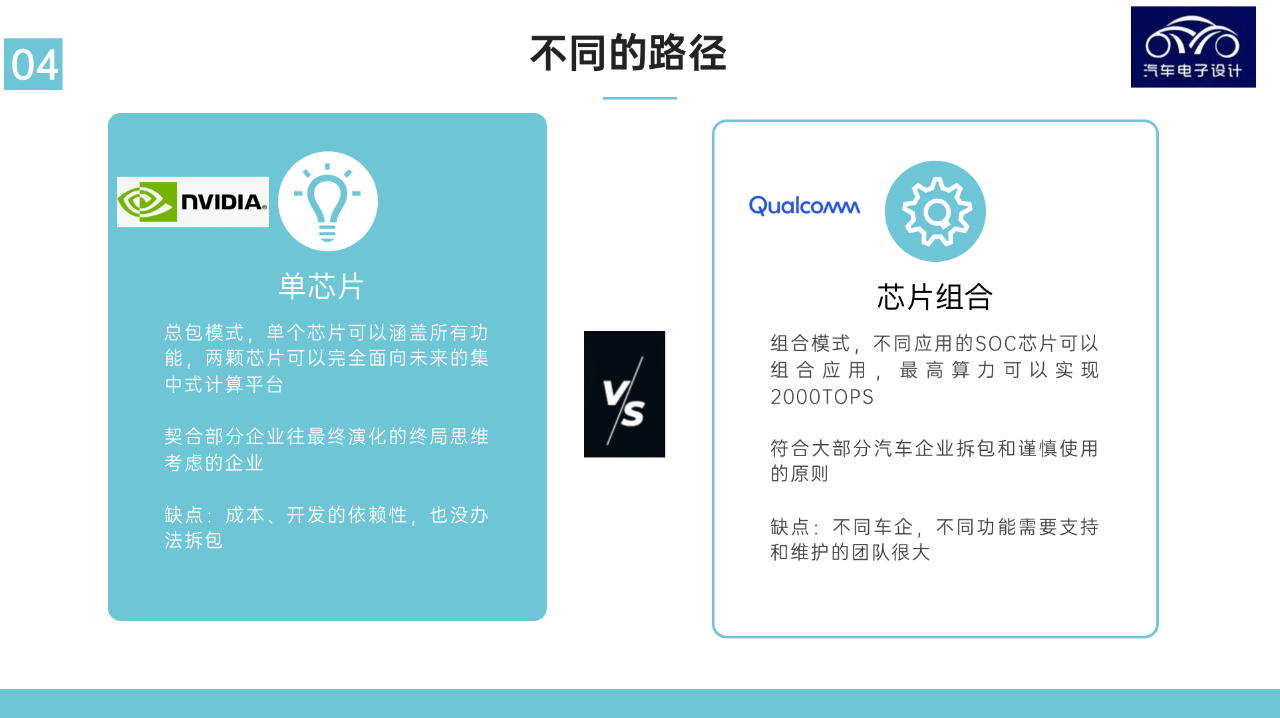
Looking at high computing power chips, three characteristics have emerged so far:- Development threshold: Due to the high process threshold of chips and the integration of different fields, the development threshold of chips, especially high-performance chips, is particularly high, requiring the establishment of ecosystem, and top enterprises have been competing for customers.
-
Campification: Different enterprise chip developments have inheritability. Changing services means huge sunk costs. Auto enterprises face more difficult choices, and Tier 1 can only choose to invest in smaller areas for development.
-
Iteration speed: Due to the current performance of intelligent cockpit and autonomous driving software, it has not yet reached the degree of independent influence on most consumers’ purchasing decisions. Therefore, the iteration speed of chips is still accelerating.

Summary: With the accelerating penetration rate of global intelligent driving, I think SOC chips are still more critical than operating systems. Without this, support for iteration to the next generation is also lost.
This article is a translation by ChatGPT of a Chinese report from 42HOW. If you have any questions about it, please email bd@42how.com.
